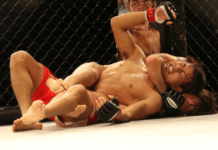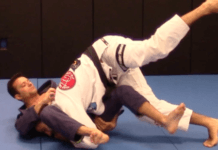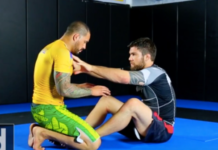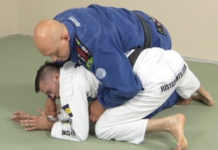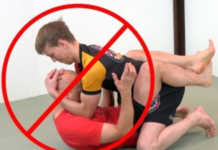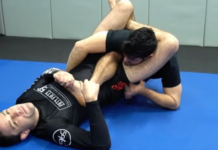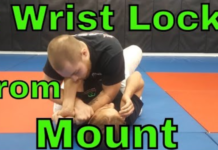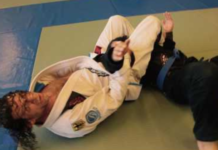The Z guard in BJJ is a variation of the half-guard. Now, in the past, it was typically thought that the half-guard is an inferior position for the person below. But people have thought of ingenious ways to attack and defend at the same time since then. And nowadays the half-guard has turned into one of the most cherished and beloved BJJ positions.
The Z guard is one of the most widely used positions in BJJ for a reason. You can use it both for attacking with sweeps and submissions and for defending against the advances of your opponent. Believe us when we say that it can be a road through hell to pass a well-placed Z guard.By practicing it often enough you will become good at it. And the Z guard will be a great addition to your BJJ moves arsenal. So, if you want to learn more about how you can attack from the half-guard, and specifically the Z guard variation, we suggest that you read the rest of this article.
The basics of Z Guard
Chances are that you have already see the Z guard in action quite a few times during practice. It’s widely used by BJJ practitioners around the world. The entry in this position is the same as for the regular half-guard, only now you will use one of your legs to form a shield (or the letter Z) and block your opponent’s chest with your knee.
This may seem like an innocuous little move, but it’s anything but. By doing this you will severely restrain your opponent from passing your Z guard and trying out any attacks whatsoever. At the same time, you will get the option to implement a variety of sweeps and attacks.
Sweeps
This guard is very powerful in the sense that you can do many different sweeps with its help. The first sweep that you can do is the following. You need to grab the cuff of your opponent on the same side where your knee blocks him. Then you need to rotate your knee so as to push your opponent’s arm to the side at the point of the elbow. This will already destabilize him a bit. After this, you need to use your other hand to grab the bottom of the pants of your opponent. You can then use your strength and the leverage to topple your opponent and get a favorable position.
If you can grab your opponent’s opposite cuff, then you will be able to do another effective sweep and get into full mount. All you need to do is, again, grab your opponent’s opposite cuff, at the side opposite of your knee shield. And then you can use your knee shield to push your opponent to the side. He won’t be able to use his hand to post because you will be holding it at the cuff. And then you can finish the sweep and enter mount position safely.
You can also use the Z guard to take your opponent’s back. You need to again grab your opponent’s opposite cuff and his pants at the bottom. Then you need to pull your bottom knee out while still holding your opponent’s cuff and pulling it. You can then finish this sequence by gradually climbing on your opponent’s back. This is the end of this move.
Countering the Z Guard
For those of you that have fallen prey to the Z guard – chances are that you already know how difficult it is to get past it. It’s, in fact, notoriously difficult and many BJJ practitioners are not very fond of getting caught up in this position. If this is you, then one of the best things that you could do from here is to just back away and stand up. Then try to pass your opponent’s open guard in some other way without entering the Z guard trap again.
But you can also flip the table on its head by performing a kneebar from the Z guard. All you need to do is to slide your hand underneath your opponent’s shin of the shield leg and over his thigh. Then you need to step over him and grab his leg with you while you fall on your back. This is the kneebar position and your opponent will have to tap out.
Check also:
- Deep Half Guard Basics you should know
- Rubber Guard Basics: What is it and Most Effective Moves
- X Guard: what is it and why to use this position
- Spider guard: What is it and Essential Techniques
Triangle
You can also use this guard to submit someone. We’ll do a case study with the good old triangle. You start in the bottom Z guard position. You then grab your opponent’s arm with an over hook and shove his other hand towards your first hand so that you can grab it with it as well. So, now you control the two arms of your opponent by only using one of your arms – and of course, you have to use the other arm for support. Then you need to pull out your bottom leg and throw it over the neck of your opponent. Then you can complete the triangle by locking it with the help of your other leg – and your opponent will have no other option but to tap.

